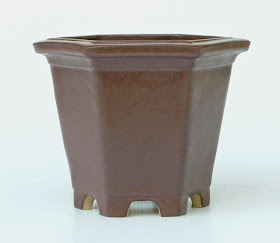Back in October last year I set up Tanuki No 4 with one of the long Sargent layerings. If you look at Post 126 you can see how much it has changed since then.
I used the plant with the two long leaders, as you can see in the lower part of the vein. They will fuse together pretty quickly. As you can see the tree has put on some great growth since October. There are quite a few branches that I've left for the time being to get the trunk well engaged. They will come off as soon as the trunk is secured and I can remove the ties and focus on developing the branches I want to keep.
This is a fantastic species for bonsai and I'm quite surprised at how well it works in our climate. After seeing them in Japan, in their winter, looking russety brown and clearly in hibernation, to be able to grow them here with only perhaps 6 or 8 weeks of slower growth in the winter creates a huge developmental opportunity.
I used the plant with the two long leaders, as you can see in the lower part of the vein. They will fuse together pretty quickly. As you can see the tree has put on some great growth since October. There are quite a few branches that I've left for the time being to get the trunk well engaged. They will come off as soon as the trunk is secured and I can remove the ties and focus on developing the branches I want to keep.
This is a fantastic species for bonsai and I'm quite surprised at how well it works in our climate. After seeing them in Japan, in their winter, looking russety brown and clearly in hibernation, to be able to grow them here with only perhaps 6 or 8 weeks of slower growth in the winter creates a huge developmental opportunity.





















